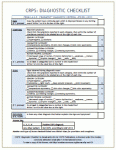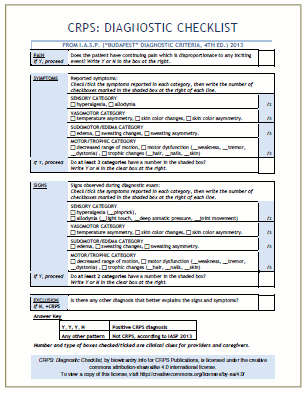
CRPS, formerly known as Reflex Sympathetic Dystrophe (RSD) or Causalgia, sometimes called Sudeck’s Atrophy, and elsewhere called Neuroalgodystrophy (among other things), is confusing to label accurately because it’s not only complex, but it’s a disease of exceptions.
In many cases, pain is not sympathetically maintained; hence the deprecation of the name RSD. Atrophy doesn’t always happen; hence the deprecation of the name Sudeck’s Atrophy. And, most importantly, it is not a psychogenic disease[1], making the name neuroalgodystrophy, or the presumptive diagnoses of somatoform disorder or conversion disorder, irrelevant — not to mention prejudicial and counterproductive.
The earliest professional description in the historical record of a syndrome like CRPS occurs in the notes of Ambroise Pare’, groundbreaking surgeon and father of forensic pathology, as well as court physician of French king Charles IX in the late 1500’s[2]. Between North America and Europe, further descriptions and case studies appeared over the next few hundred years[1]. Consistent diagnostic characteristics were described by neurologist and American Civil War battle physician Silas Weir Mitchell in the mid-1860’s[3], who saw many hundreds of cases due to the peculiarities of the ballistics used in that war.
Thus, CRPS does not qualify as a “disease of modernity”, the cluster of diseases characterized by distributed pain, lethargy, memory/cognitive impact, and immune dysfunction. In fact, it predates the Industrial Revolution by a couple of centuries. CRPS has also been described in animals[4]. In short, there is no compelling evidence that CRPS is anything other than a disruptive companion of mammalian neurology, which has become more recognized as humans are living longer despite impairments, and describing illness better.
Various attempts have been made to create coherent diagnostic criteria. Sadly, they’ve been written and published by physicians, who rarely have the distinct skillset of information architecture — but who do have lots of practice using double negatives, complex constructions, and the passive voice. The inevitably garbled paragraphs which result from using this professional style to describe the diagnosis of Complex Regional Pain Syndrome come across, however unconsciously, as sloppy and ill-defined, regardless of the underlying information.
After much thought and research, this blogger’s view is that the most recent (2013) IASP diagnostic criteria[5] may not be perfect, but are currently the best we have for all-around clinical use. Therefore, in the interests of obviating (that is, doing an end-run around) the confusion, this blogger — who is an information architect — has turned the diagnostic criteria into a simple checklist.
Once completed for each patient, this checklist not only delivers a yes/no for CRPS diagnosis, but also highlights which features of that case are salient, and where treatment of that person should probably focus.
Full-sized PDF format is downloadable and available for free under Creative Commons Share-Alike Attribution International licensure. In other words, wherever you are in the world, you are free to use and alter this, copy it, pass it on, even charge for it — as long as it contains a link to this page (biowizardry.info) or its companion page, livinganyway.com, and you don’t try to claim or assert IP rights. It’s appropriate to pass it on as freely as it’s offered to you. Use it in good health — whenever possible.
REFERENCES
1. CRPS not psychogenic; also, history of CRPS:
Feliu, M., and Edwards, C.L. Psychologic Factors in the Development of Complex Regional Pain Syndrome: History, Myth, and Evidence. Clin J Pain, Volume 26, Number 3, March/April 2010.
2. King Charles IX, 1550-1574, had persistent burning pain, muscle wasting, and contractures following bloodletting with smallpox: Pare, A., 1634. Of the Cure of Wounds of the Nervous System.
The Collected Works of Ambroise Pare. Milford House, New York.
3. S. Weir Mitchell, Morehouse and Keen on causalgia:
Gunshot Wounds and Other Injuries of Nerves. Philadelphia: JB Lippincott Co., 1864.
«As to pain, I am almost ready to say that the physician who has not felt it is imperfectly educated.» S. Weir Mitchell.
4. CRPS in animals:
Bergadano, A., Moens, Y. and Schatzmann, U. (2006), Continuous extradural analgesia in a cow with complex regional pain syndrome. Veterinary Anaesthesia and Analgesia, 33: 189–192.
PMID: 16634945
5. Yet another link to the PDF of the Diagnostic Criteria checklist:
https://biowizardry.info/wp/wp-content/uploads/2014/12/CRPS_Diagnostic_CheckList.pdf

CRPS: Diagnostic Checklist by CRPS Publications is licensed under a Creative Commons Attribution-ShareAlike 4.0 International License.



